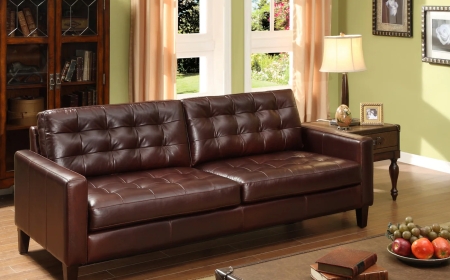Reliable Power Transmission: Everything You Need to Know About AAC Cable
When it comes to efficient, economical, and durable overhead power transmission, AAC cable (All Aluminium Conductor) is an industry staple
When it comes to efficient, economical, and durable overhead power transmission, AAC cable (All Aluminium Conductor) is an industry staple. But what makes AAC cables so important, and why do utility companies and contractors continue to rely on them for modern electrical infrastructure? In this in-depth guide, youll discover how AAC cable works, its key specifications, advantages, applications, and expert tips for choosing the right one.
What Is AAC Cable?
AAC cable stands for All Aluminium Conductor cable. Its a type of overhead conductor that uses strands of 1350-H19 aluminium, known for its high electrical conductivity. Unlike ACSR (Aluminium Conductor Steel Reinforced), AAC cable contains only aluminium wires without a steel core.
This design makes AAC cables lightweight and easier to install, especially across short to medium spans in urban areas where towers or poles are closer together.
Key Features of AAC Cable
? High Conductivity:
AAC conductors have superior electrical conductivity due to their pure aluminium strands.
? Corrosion Resistance:
Aluminium naturally resists corrosion, making AAC suitable for coastal or humid regions.
? Lightweight Structure:
The all-aluminium construction reduces weight, allowing for simpler tower and pole designs.
? Cost-Effective:
AAC cables generally cost less than ACSR cables, making them an economical choice for distribution networks.
? Ease of Installation:
The flexible and lighter design simplifies handling and installation.
Technical Specifications of AAC Cable
Below is a typical specifications table for standard AAC cable varieties:
| Property | Description |
|---|---|
| Material | 1350-H19 aluminium wires |
| Construction | Stranded aluminium wires |
| Standard Sizes | 6 AWG to 1,000 kcmil and larger |
| Rated Voltage | Up to 33 kV (typical overhead distribution lines) |
| Temperature Rating | 75C to 90C (continuous operation) |
| Standards | ASTM B231, BS 215 Part 1, IEC 61089 |
Tip: Always check local utility specifications, as standards can vary by country or region.
Where Are AAC Cables Used?
Common applications include:
-
Urban overhead power distribution
-
Short transmission lines with close pole spacing
-
Coastal and marine environments
-
Areas with low ice or wind loading conditions
AAC Cable vs. ACSR Cable: Whats the Difference?
Many professionals compare AAC and ACSR (Aluminium Conductor Steel Reinforced). Heres a quick breakdown:
| Feature | AAC Cable | ACSR Cable |
|---|---|---|
| Core Material | Pure aluminium strands | Aluminium strands with a steel core |
| Strength | Moderate tensile strength | Higher tensile strength for long spans |
| Weight | Lightweight | Heavier due to steel core |
| Corrosion Resistance | Excellent (no steel to corrode) | May require galvanization for steel core |
| Applications | Short-to-medium urban spans | Long rural spans and heavy loads |
? Key Insight: If you need higher tensile strength for longer spans, ACSR is preferable. But for urban networks with shorter distances, AAC cables are ideal.
Benefits of Using AAC Cable
Here are some clear advantages that make AAC a top pick for modern distribution:
-
Lower Installation Costs: Lightweight means reduced hardware requirements.
-
Reduced Sag: Properly tensioned AAC cables maintain good clearance.
-
Minimal Maintenance: Aluminiums corrosion resistance reduces long-term upkeep.
-
Sustainability: Aluminium is fully recyclable, supporting eco-friendly grid designs.
How to Choose the Right AAC Cable
Selecting the correct AAC cable requires careful consideration of these factors:
?? Span Length: AAC is best for short to medium spans. For longer spans, ACSR may be better.
?? Environmental Conditions: Coastal or corrosive environments favor AAC due to its corrosion resistance.
?? Mechanical Strength Requirements: Verify that the tensile strength suits your design load.
?? Voltage Level: Match the conductors ampacity with your systems voltage and current.
?? Compliance: Ensure the cable complies with national and local standards like ASTM, BS, or IEC.
Installation Tips for AAC Cable
Professionals often follow these best practices when installing AAC:
-
Use proper stringing equipment to avoid conductor damage.
-
Maintain recommended sag and tension to prevent clearance issues.
-
Inspect strands before installation; any nicked or broken wires should be replaced.
-
Follow all safety protocols when working on live lines.
Sustainability and the Future of AAC Cables
As energy grids evolve towards renewable integration and smart grid systems, AAC cables continue to play a vital role. Their recyclability, cost efficiency, and lightweight properties align with sustainability goals in modern infrastructure projects. Many utility providers are upgrading aging lines with AAC to optimize cost and performance.
Frequently Asked Questions (FAQs)
? What does AAC stand for in cables?
AAC stands for All Aluminium Conductor, referring to the cables construction of pure aluminium strands.
? Are AAC cables better than ACSR?
It depends on your project. AAC is preferable for short spans and environments prone to corrosion. ACSR is better for long distances needing higher tensile strength.
? How long do AAC cables last?
When properly installed and maintained, AAC conductors can last 40+ years, depending on environmental conditions.
? Can AAC cables be used in rural areas?
While possible, AAC is mostly used in urban and coastal regions due to its limited tensile strength. For long rural spans, ACSR is generally recommended.
? Is AAC cable recyclable?
Yes! Aluminium is 100% recyclable, which makes AAC a sustainable choice for modern grids.
Quick Tips: Safe Handling of AAC Cable
-
Always wear protective gear.
-
Avoid dragging the cable across abrasive surfaces.
-
Use appropriate grips for pulling conductors.
-
Store in a dry, covered area to prevent damage before installation.
Key Takeaways: Why AAC Cable Matters
? Cost-effective solution for urban power distribution.
? Lightweight, corrosion-resistant design extends service life.
? Meets international standards for safe, reliable performance.
? Supports sustainability through recyclability and reduced environmental impact.
















![Top 9 Real Estate Mobile App Developers in Riyadh, Saudi Arabia [2025 Edition]](https://www.biphoo.uk/uploads/images/202507/image_430x256_6879d0d524335.jpg)

















